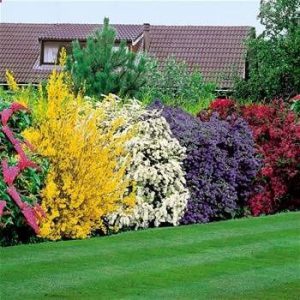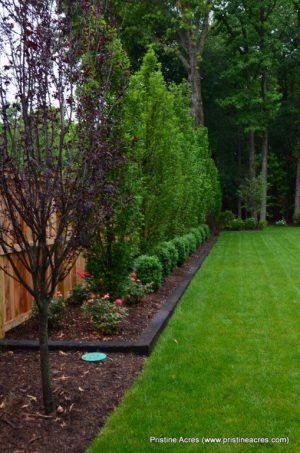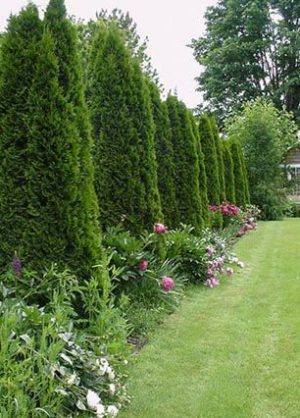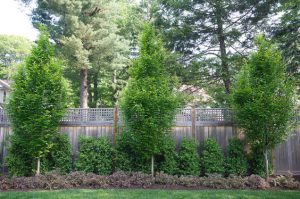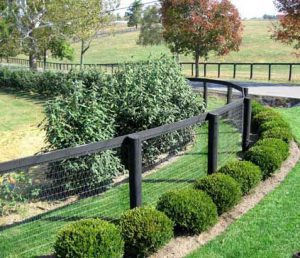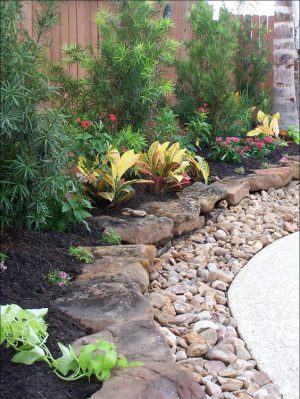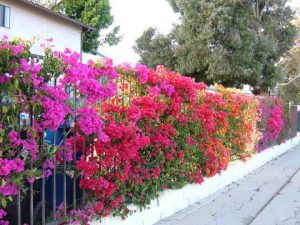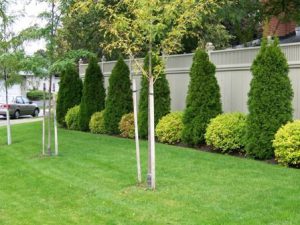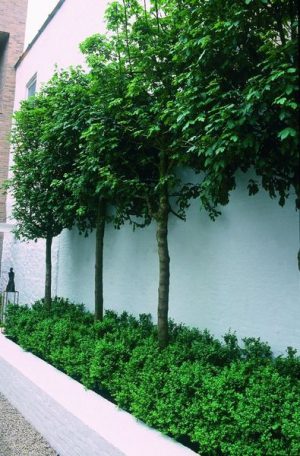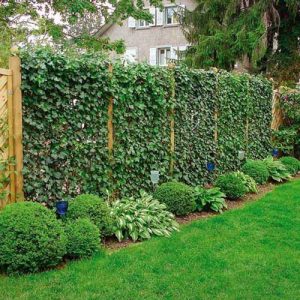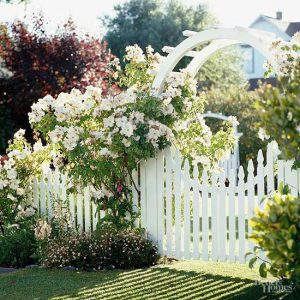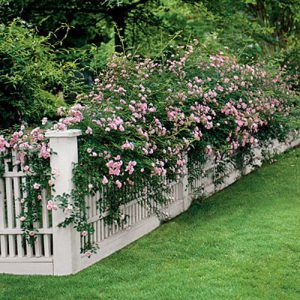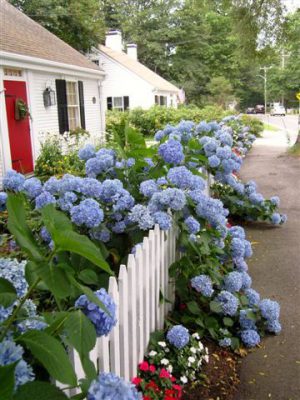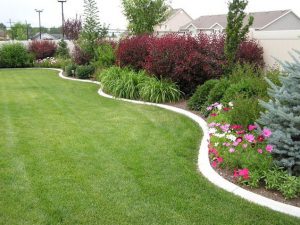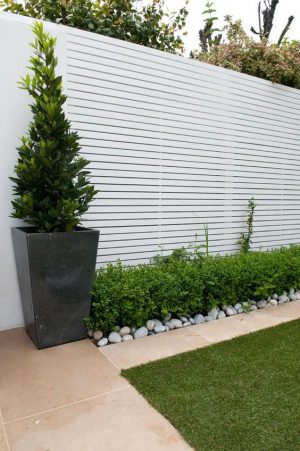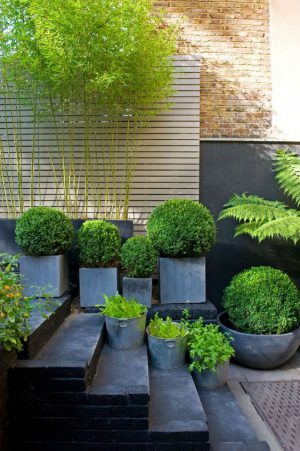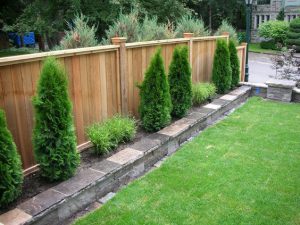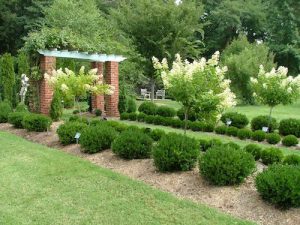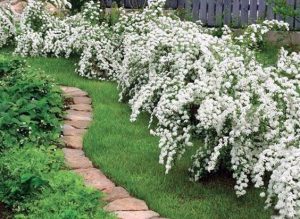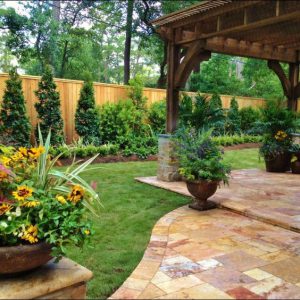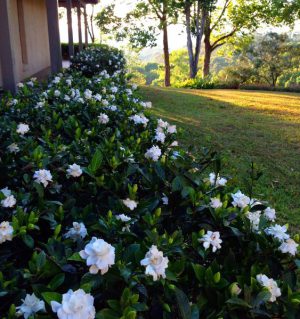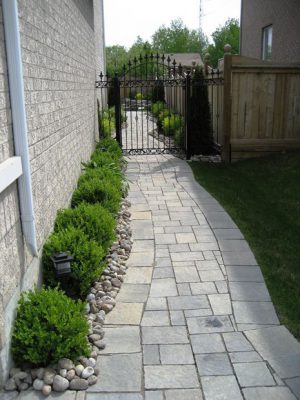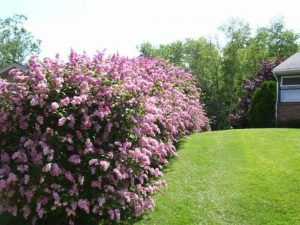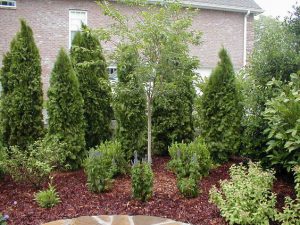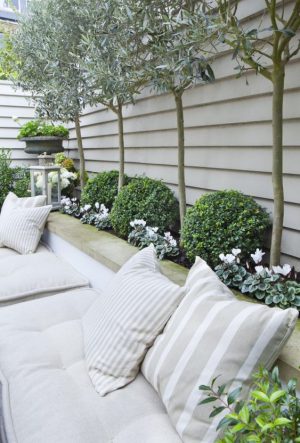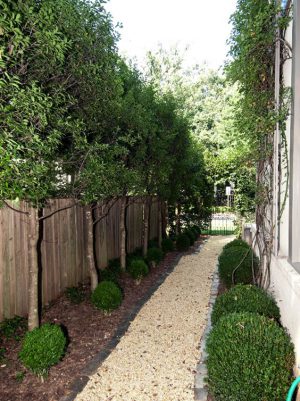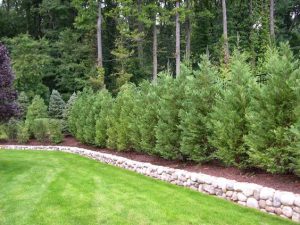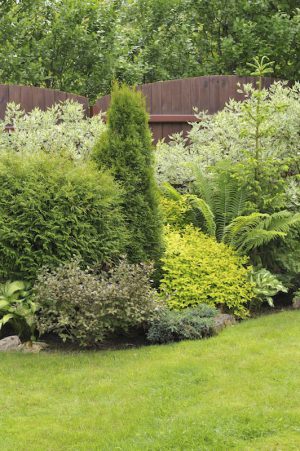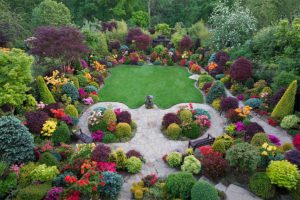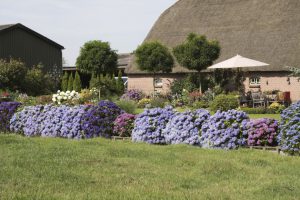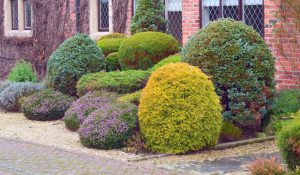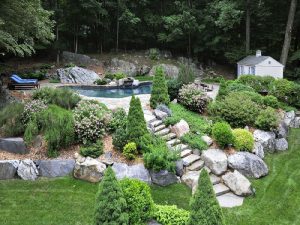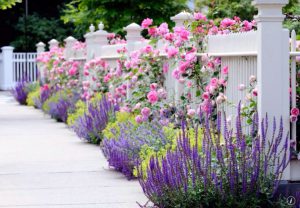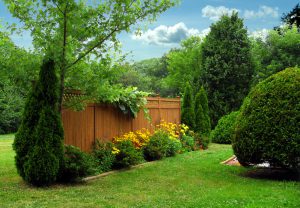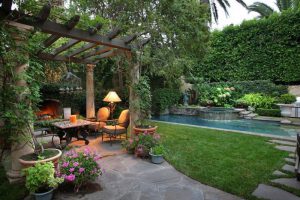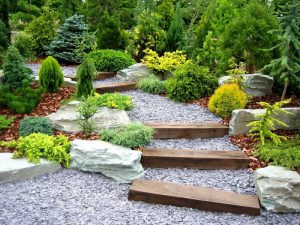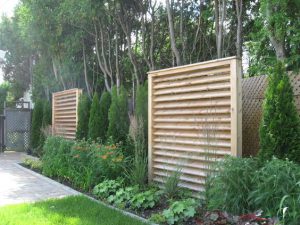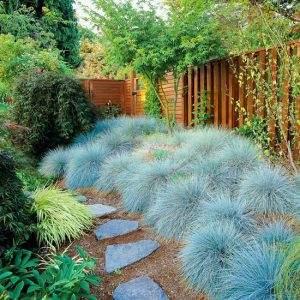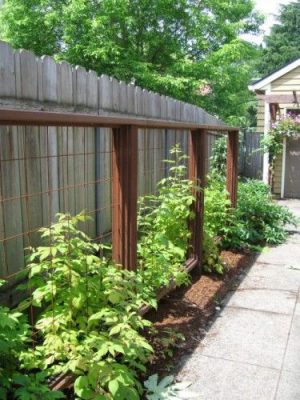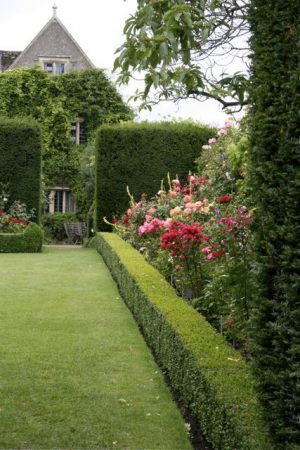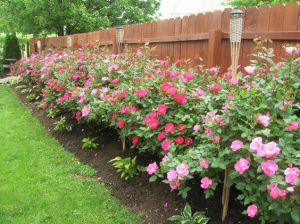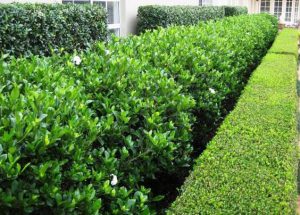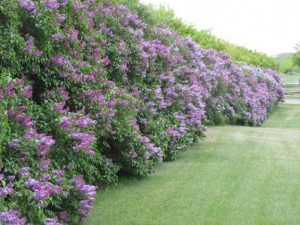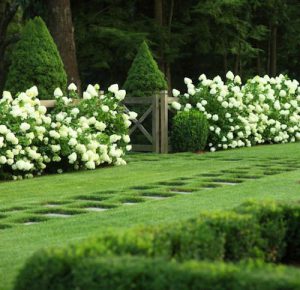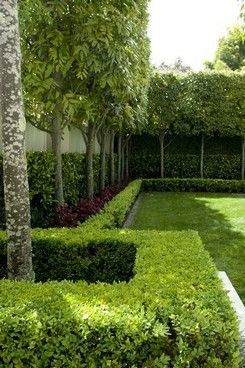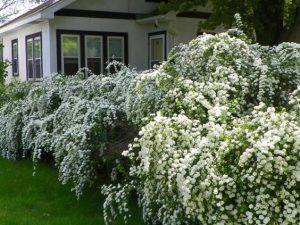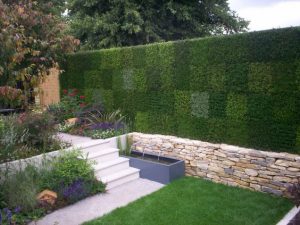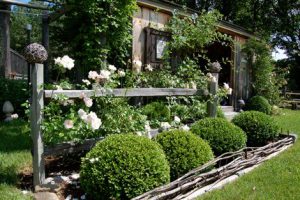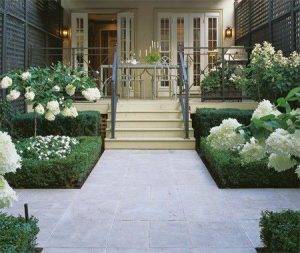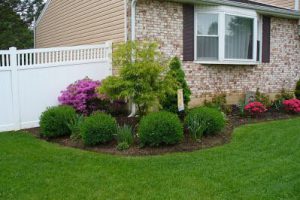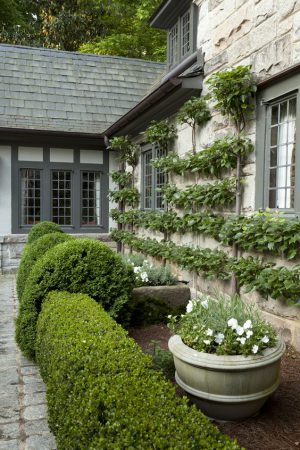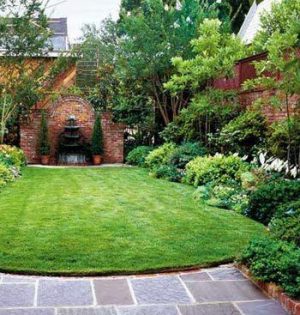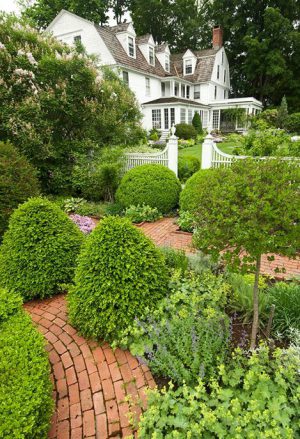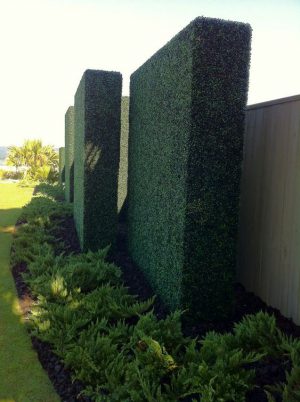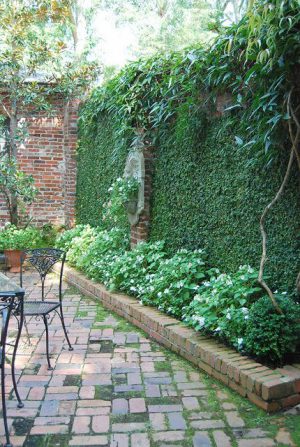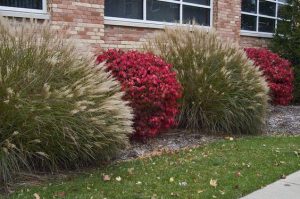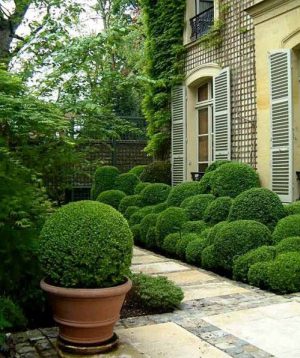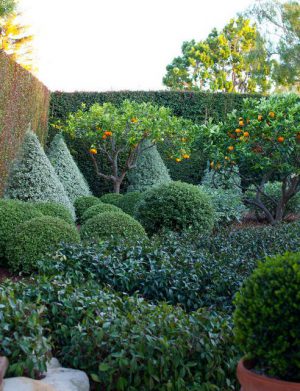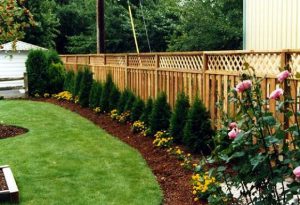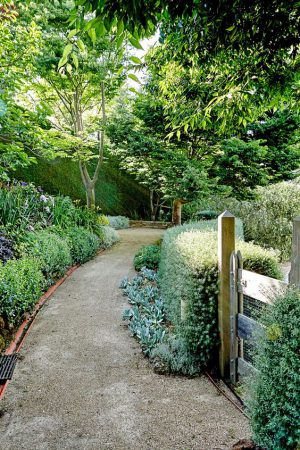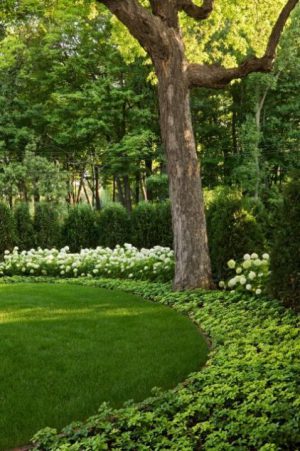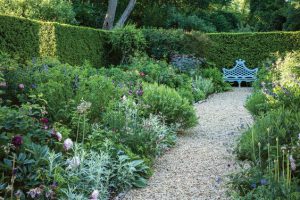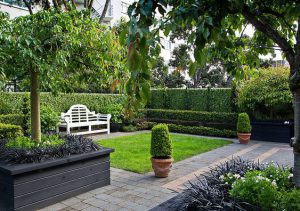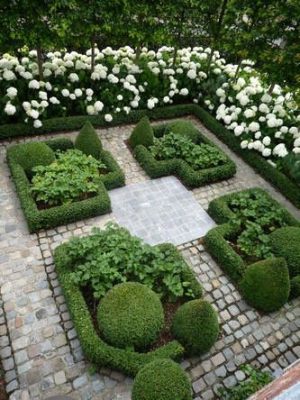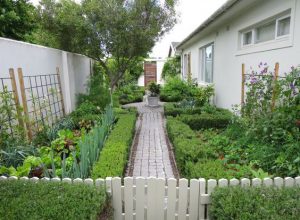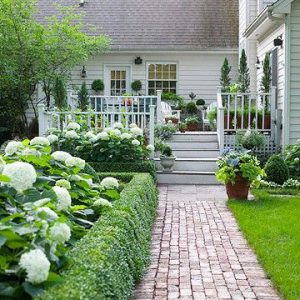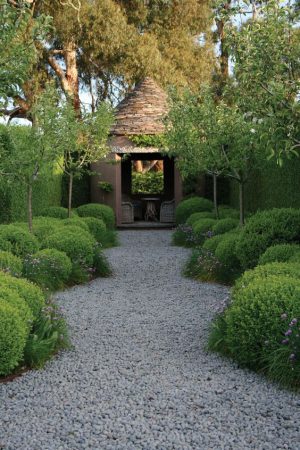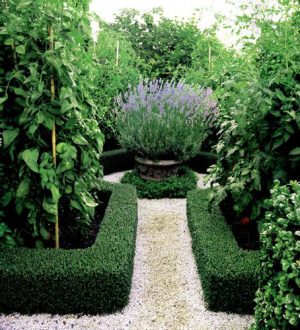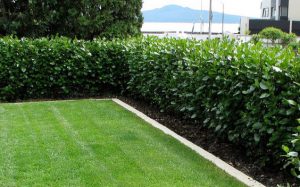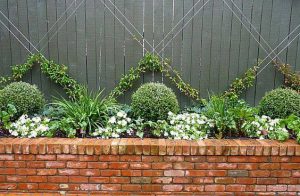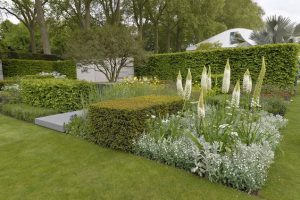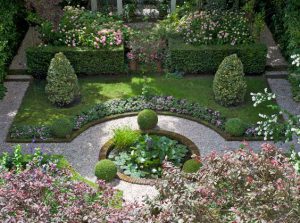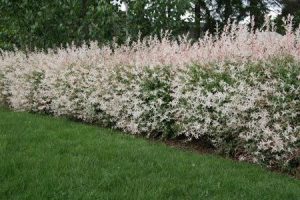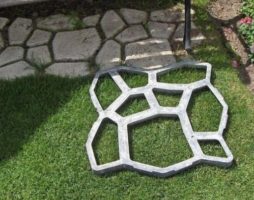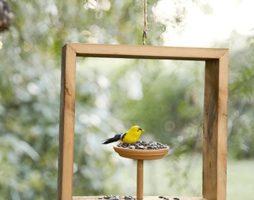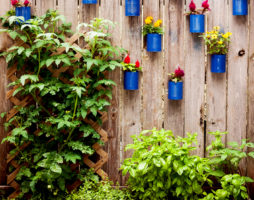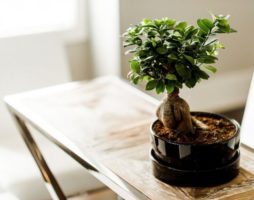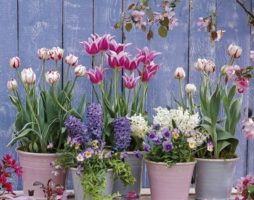When purchasing country housing or choosing a country house as a vacation spot, the owner gives greenery, plants, flowers an important place in his life.
- Where to begin?
- What plants to plant near the fence?
- Shrubs along the fence
- Shrubs along the paths
- Rules for planting trees and shrubs along the fence and paths
- What to plant on the other side of the fence?
- Planting time for trees and shrubs along the fence and paths
- Photo gallery - trees and shrubs along the fence and paths
- Video
He uses them to recuperate, respite from the hustle and bustle of days and as a way to relax. In order for the suburban space to really contribute to relaxation, you need to organize it and make it appropriate for the tasks set. In this case, large tasks are assigned to the trees and shrubs located along the fence and paths.
They fill the surrounding world with joy, their appearance delights a person, plant oases are used to decorate life. The peculiarity of trees and shrubs is that they can be used not only as decorative elements to decorate the landscape, but are able to bear fruit, replenish the supply of vitamins and minerals, which is important for the suburban area and the family living here.
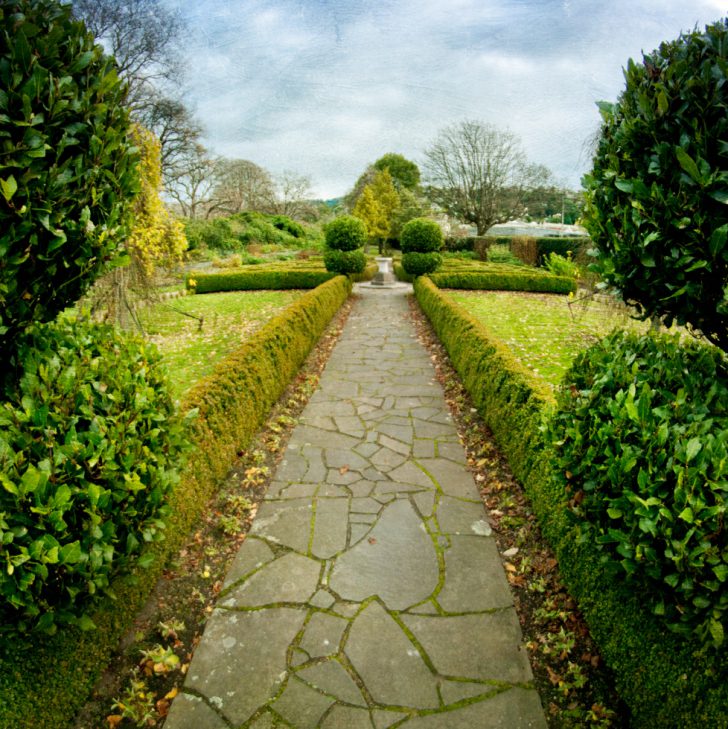
hedges along paths
It is impossible to imagine the human world devoid of vegetation: shrubs and trees. They not only affect the psychological and emotional state of all living things, but also determine the level of human health. Plants give us the most important element for existence and health - oxygen.
back to index ↑Where to begin?
Experts advise planning and placing trees and shrubs along the fence and paths immediately, simultaneously with the planning of a suburban building. An integrated approach to organizing and filling the space will allow the summer cottage to acquire a habitable look by the end of construction work, fill with greenery and look like a real kingdom of nature.
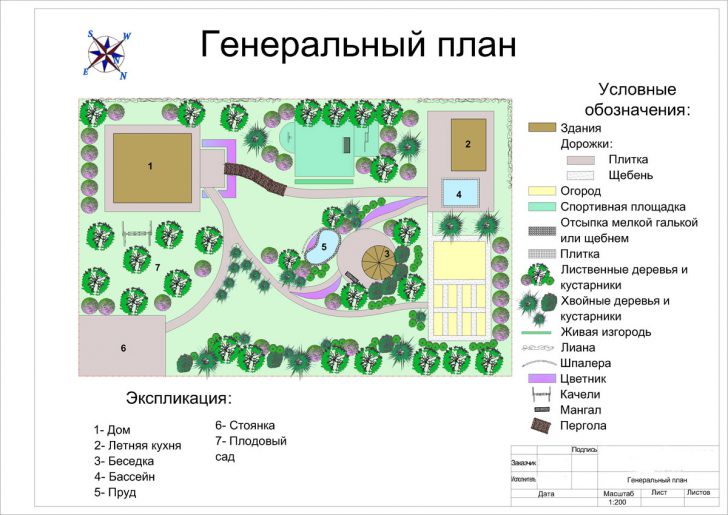
Site plan with shrub arrangement
Before starting work on landscaping the territory, inspect the area, get acquainted with its advantages and pay attention to the disadvantages, evaluate the possibilities and conditions for planting plants. This is very important for the selection of varieties and varieties of trees and shrubs.
When arranging a suburban area, in order to maintain the harmony of all components and get a finished space, it is better to pay attention and be guided by the recommendations developed by specialists. Before deciding which plantings will grow near the fence, which bushes inside the territory, you need to pay attention to the countryside and get answers to the following questions:
1. Decide on the purpose of the bushes and trees used for landscaping the site. Figure out what the goal is when planting: close an ugly fence or decorate a lovely building. Choose what main function the plants will carry: mask the fence or harmoniously coexist with it.
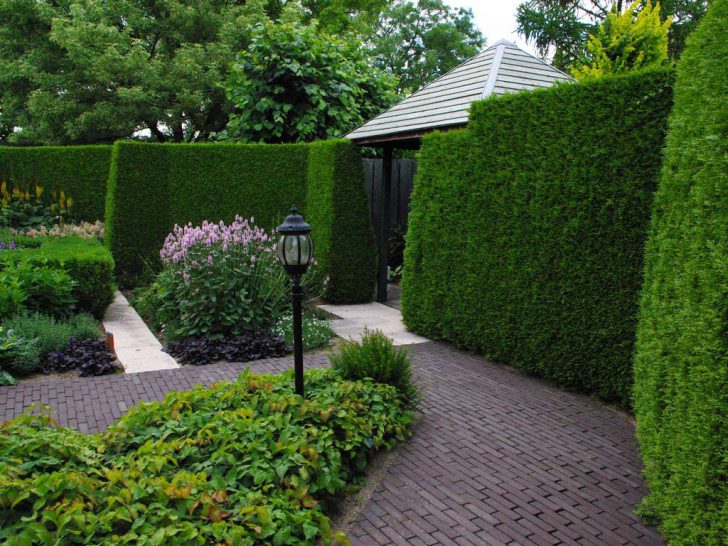
Fence camouflage with shrubs
2.Determine for yourself what part of the space falls under the power of trees and shrubs, how much it costs to leave free space. Don't overload the area. Excessive loading of trees and shrubs along the fence, especially tall plants, will visually reduce the area, and make it oversaturated.
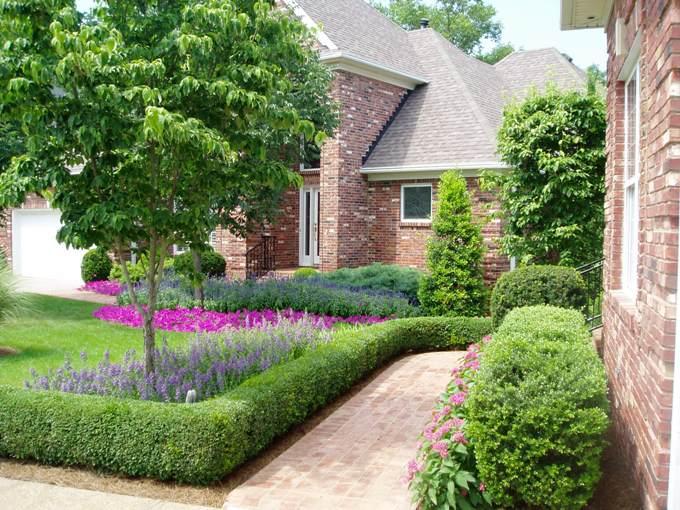
Shrub along the paths should not overload the space
3. Determine which side of the fence is available for planting: brightly lit by the sun or constantly in the shade. When planting trees, focus on the shade cast by the fence, and plant those plants that grow well in the given shady conditions.
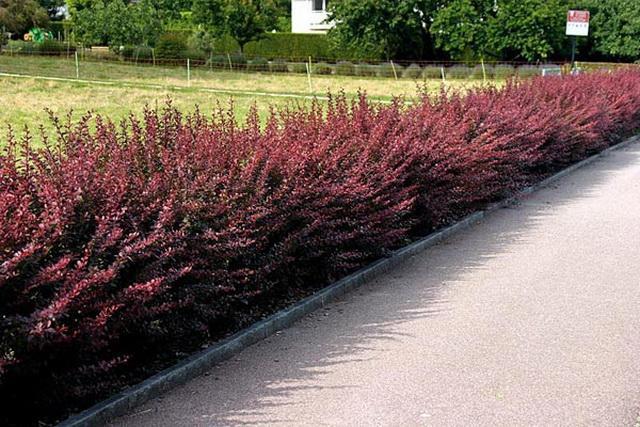
Barberry bushes tolerate shade well
4. What is the soil in the area of the future planting? In order for a plant to truly reveal its decorative properties, it must grow in conditions that are comfortable for itself.
5. How far is the subsequent care of the plant. Is it possible to provide constant attention to the capricious plant world, to provide pruning and shaping trees and shrubs that need it.
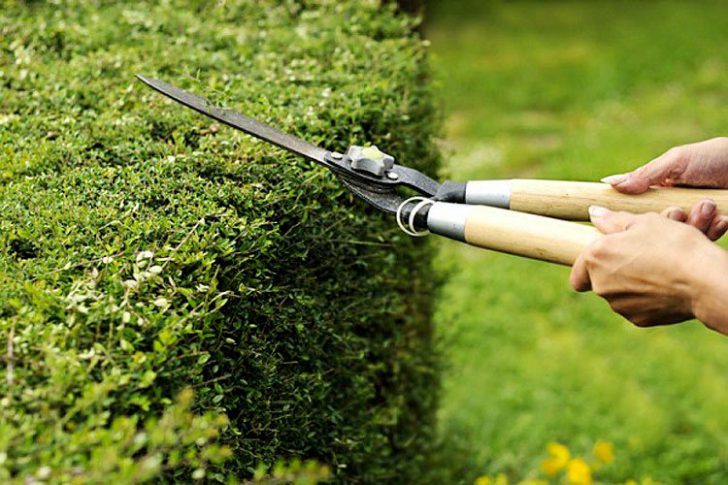
The hedgerow needs regular maintenance.
There are two options for the formation of vegetation on a personal plot:
1. Landscape planning does not require special human participation. This method of forming the territory is especially well suited for sites located on uneven terrain. In this case, due to the natural difference in levels, the plants look beautiful and together form interesting compositions.

Free landscaping of the site
2. Geometric planning provides for maintaining certain distances between shrubs and trees, maintaining strict geometric shapes. Most often in this case, rows of densely planted trees are created. Between the rows, an empty space is provided and standing alone vertical plants among the plot.
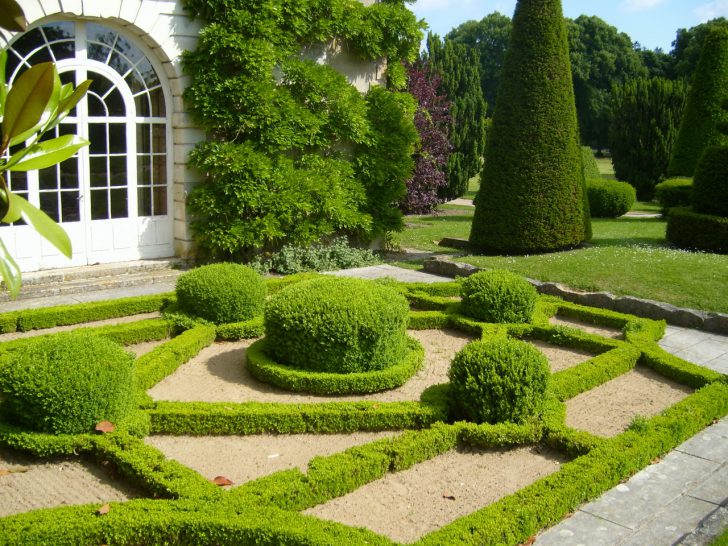
Strict geometric layout of the site
What plants to plant near the fence?
When choosing trees and shrubs along the fence and paths, pay attention to the fence itself, its appearance and the quality of the materials used. To choose plants that will be located in close proximity to the fence, it is necessary to build on its characteristics:
Rabitz
The chain-link refers to fragile structures. On an unfortified fence, you cannot put a powerful shrub or a weaving liana on top, they will certainly destroy the fence. But on the other hand, a transparent fence on the site is an undesirable species.
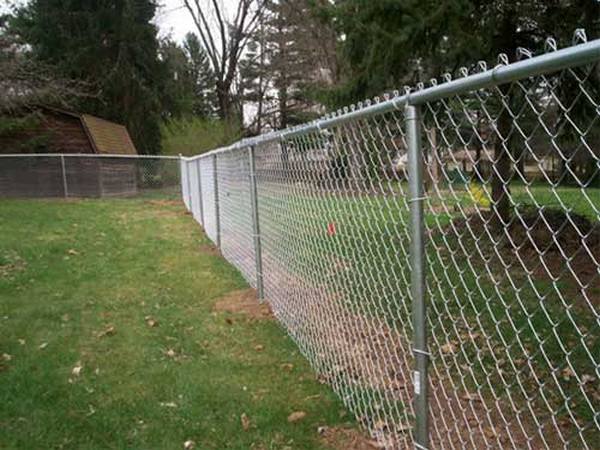
Chain-link fence on the site
The frequent life of a family living in a country house should not be in the public domain and needs some kind of cover. In this case, bushes are suitable for planting, which are able to support themselves and create an obstacle for prying eyes: lilac, irga, thuja.
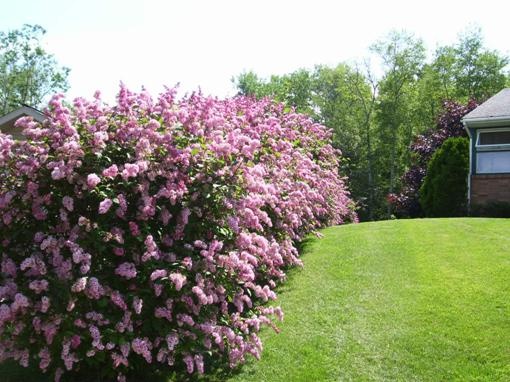
Lilac bushes cover an unsightly chain-link fence
Bushes planted near the fence from barberry, chokeberry or hawthorn look good. Plants are planted at a distance of up to a meter from the fence into the hole, planting depth from 0.5 m.
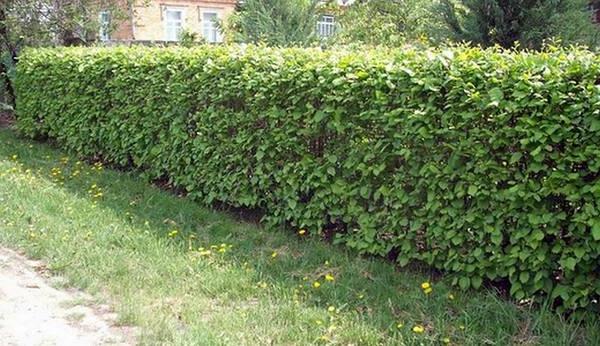
Hawthorn bushes in the design of the fence
Wooden fence
Near the wooden fence, you can plant any shrubs and trees. This is a great place for fruit seedlings and climbing shrubs such as hops. The only limitation is the need for constant care and the difficulties that arise in the performance of painting and maintenance of a wooden fence.
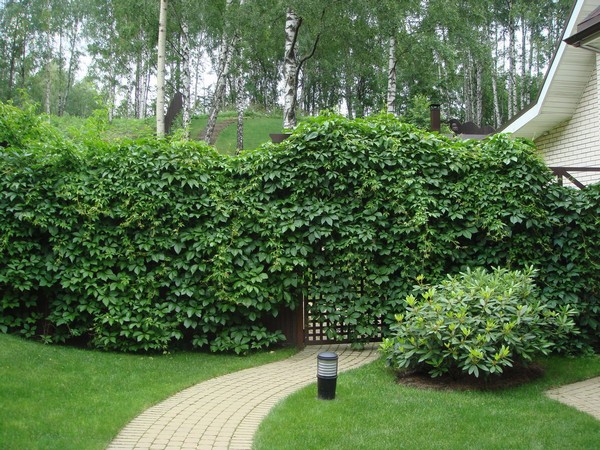
Curly shrub goes well with a wooden fence
Corrugated fence
There is an opinion that metal corrugated board is a rather unsafe structure for delicate plants. During a hot day, it heats up to high temperatures, and not all shrubs and trees can withstand such a hot neighborhood. But this opinion is disputed by the plants themselves.Near the corrugated board, lilac grows well, jasmine takes root, raspberries feel confident. Its surface is easily braided with creepers.
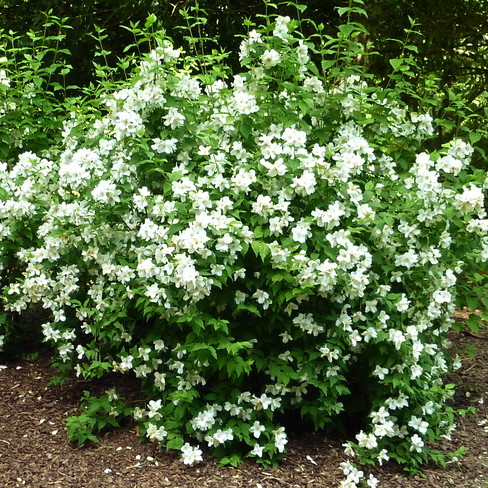
Jasmine bushes can be planted next to a corrugated fence
Shrubs along the fence
When choosing shrubs and trees for a suburban area, you can create not only luxurious greenery. Consider planting environmentally friendly and healthy fruit plants, which will be an additional source of trace elements and vitamins. Look for trees and shrubs that are low maintenance and easy to grow in your area.
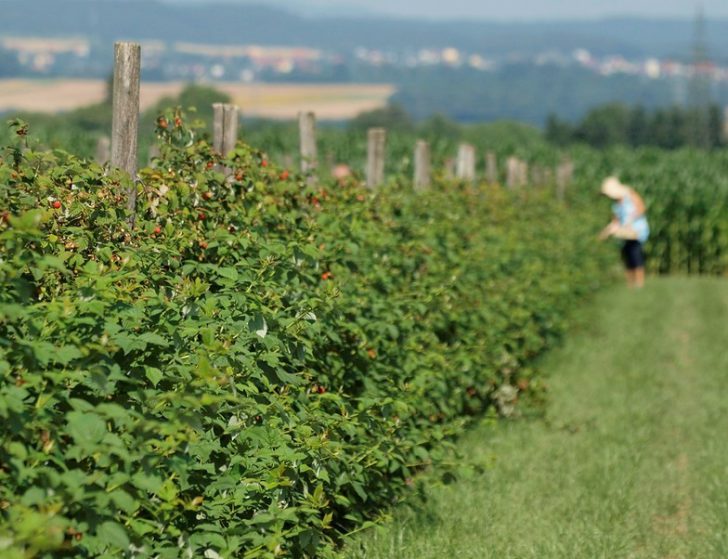
Raspberry hedge is not only beautiful, but also useful
A beautiful solution is to create a fence from neighbors in the form of a hedge. With good care, shrubs form a solid wall, which is desirable to cut periodically and at the same time you can give it an interesting shape. It is assumed that the shrub over time will grow to a sufficient height, close the branches and look like a living fence. The only obstacle in the desire of the bushes to expand the scope of their habitat. In this case, the shrubs must be constantly cut and not allowed to conquer the entire suburban area.
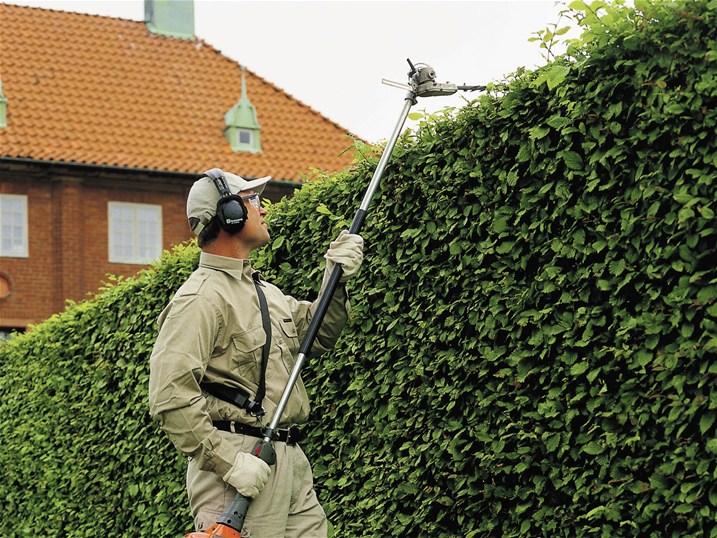
You can independently adjust the height of the fence
You can use a shrub of the same species. By planting plants of different heights and colors, you will get a picturesque wall that will have a unique look twice a year: during the flowering period and in autumn. The abundance of colors will fill your suburban space with unique beauty.
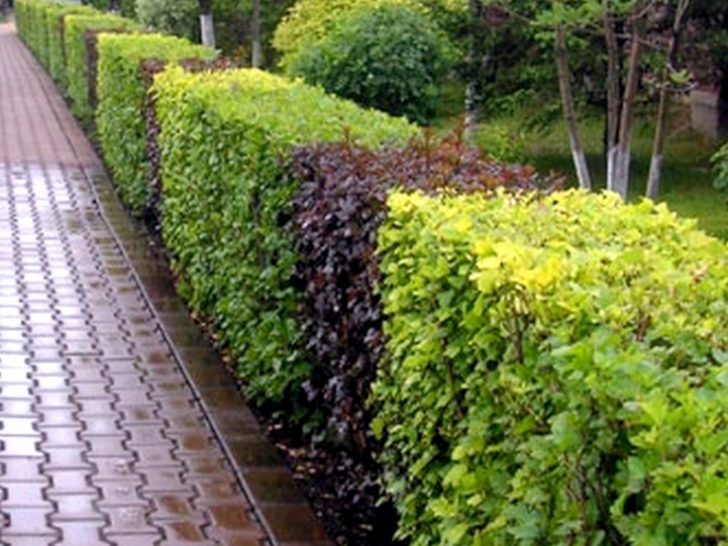
Shrubs along the paths of different colors
Thuja, lilac, hydrangea and spirea are suitable for hedges. When choosing plants, note that some of them do not like to be around. So, for example, barberry and deren do not coexist badly with each other.
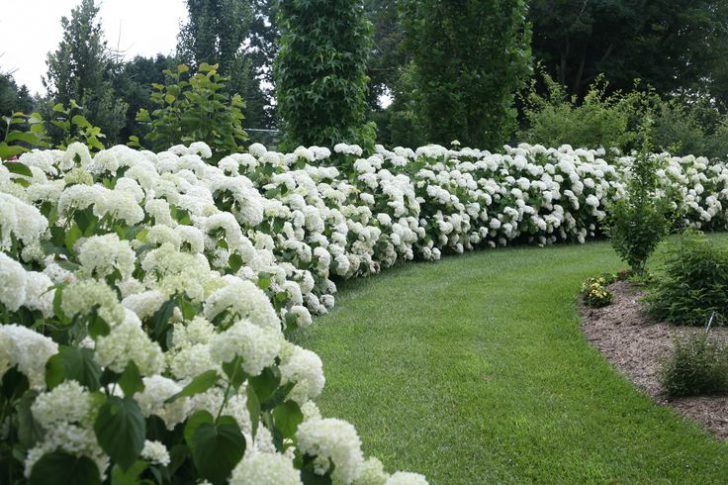
Fluffy hydrangea bushes along the path
A good idea at first glance to plant shrubs with edible berries near the fence does not always seem successful later on. Fruiting plants quickly take root and begin to capture the surrounding space, while the berries remain small and sour. When choosing a plot near the fence for fruit bushes, such as currants, raspberries, blackberries, it is necessary to constantly take measures to limit the possibility of their growth.
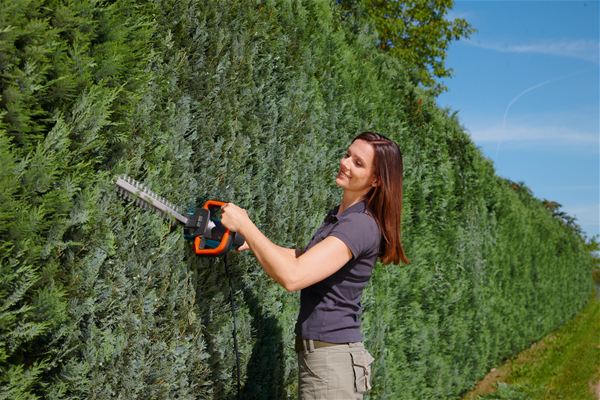
Trimming the bushes along the fence
To do this, immediately after the allocated area, it is better to provide a lawn. Shrub care consists in tying up and cutting off old branches. Plants also need weeding and weeding near the root. This must be done once a month.
back to index ↑Shrubs along the paths
The decoration of the paths with a live ribbon of plants looks very beautiful and decorates the territory. In this case, it is not necessary to create a continuous strip of low shrubs. This landing will require special attention and care. It is enough to create small thickets of bushes around the paths, such as boxwood in the southern regions, low thuja. At the corners of the path, you can experiment, lay down hills of stones or one large boulder, place nearby bushes of creeping juniper.
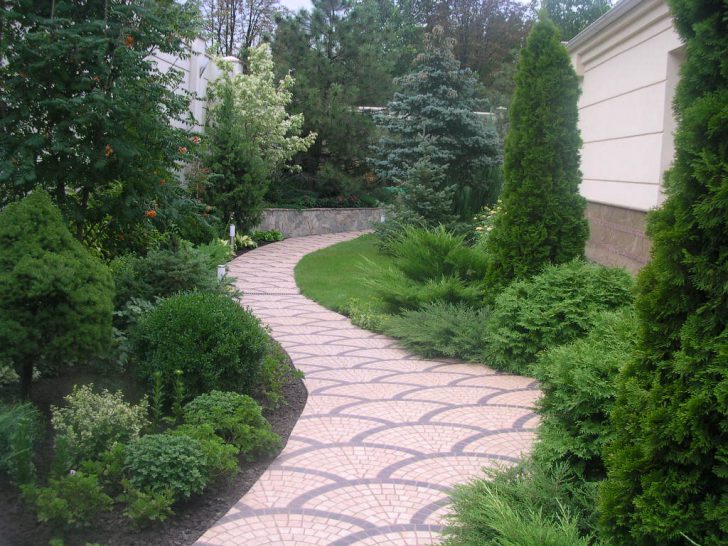
Bushes of various kinds along the path
When planting plants, it is recommended to adhere to the following rules:
1. Trees should be located as far as possible from the path, up to 1.5m. Otherwise, their roots may violate the integrity of the coating, and the crown may interfere with the movement of people.
2. Shrubs are planted at a distance of up to one meter.
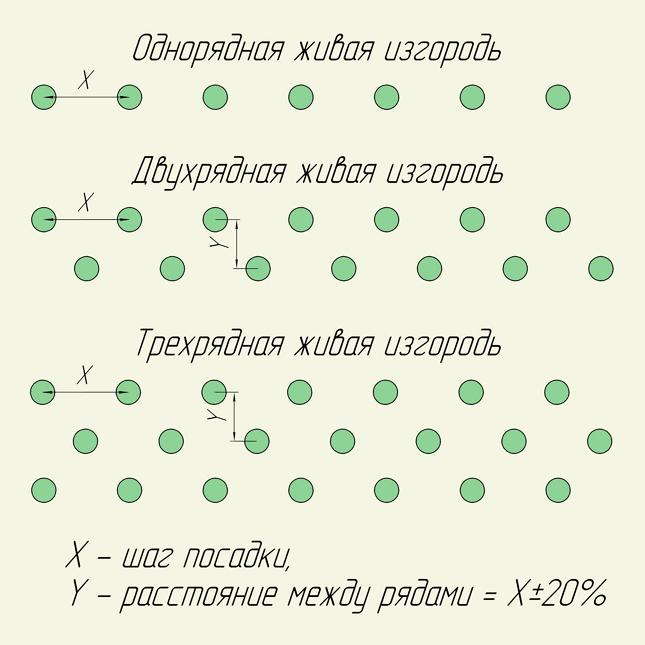
Distance between shrubs in a hedge
3. Shrubs and trees should preferably be arranged in increasing height from south to north. In this case, the plants will not cover each other from the sun.
back to index ↑Rules for planting trees and shrubs along the fence and paths
When gardening, the main thing is to correctly form all the plants and link them into a single whole. In this case, all vegetation will be in the field of view of a person.All the colorful variety will be available for viewing and aesthetic pleasure.
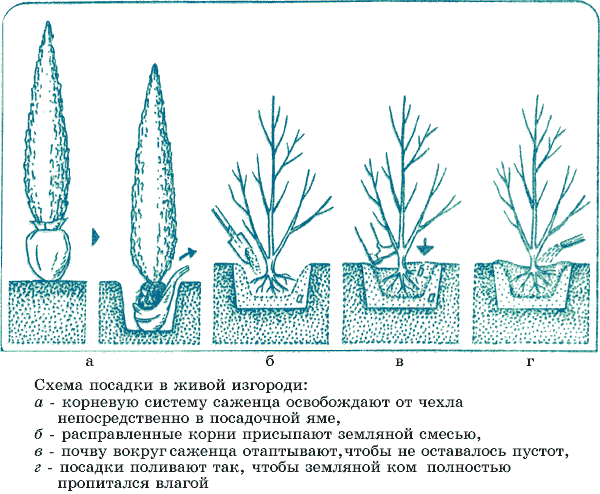
The scheme of planting shrubs along the fence
In the spring you will get a real fairy tale of flowers, petals and young greenery, which will be able to unite into a single fresh composition on the scale of the site. And the sight of the autumn colorful palette, consisting of all known shades of green, brown, yellow, red and orange, will blow your mind. To do this, it is important that the following conditions are met:
1. The farther from the path the plants are located, the higher they should be.
2. Nearby trees and shrubs should not have high shapes that cover the entire view.
3. Vegetation should not be the same in color and height, unless it should be a creative decision of the designer.
4. The diverse flora looks more interesting, creating a riot of colors and heights on the spot.

Formed hedge planting table
What to plant on the other side of the fence?
When planting shrubs and trees on the front side of the fence, the owner tries not only to disguise the household from prying prying eyes. It is considered important to create an attractive area around the yard. But do not give preference to fruit plants, hundreds of small legs can trample the flower beds in pursuit of delicious fruits.
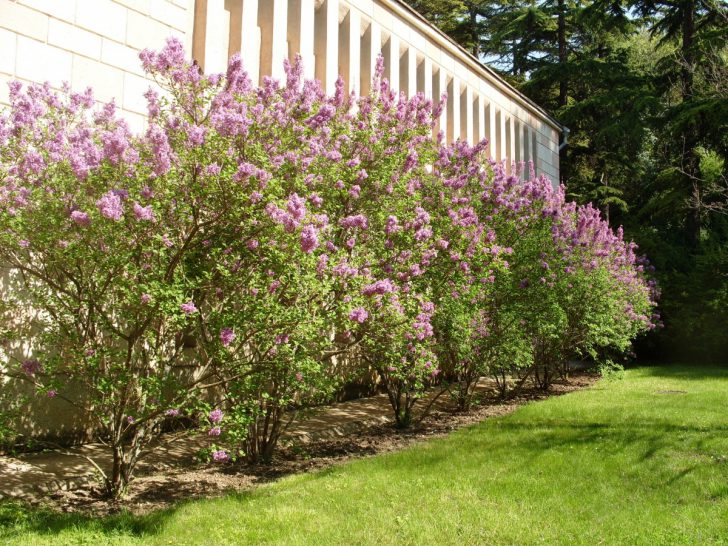
Flowering lilac bushes along the back of the fence
When planting tree seedlings, please note that over time they grow into tall trees that cut off communications, create a large shady zone, and over time can be uprooted by gusts of wind and destroy everything in their path of fall.
back to index ↑Planting time for trees and shrubs along the fence and paths
In order for the plants to successfully survive the winter period, saturated with low temperatures and powerful winds, when planting, listen to the advice of experts and pay attention to the following points:
1. When planting trees and shrubs, step back from the fence to the distance required for the development of the plant. Otherwise, the roots can destroy the fence, and the crown can obscure the neighboring area, which causes displeasure of the neighbors. It is generally accepted that the distance from the fence for a tree is 3 m, for a bush 1.5 m.

Table of distances between stands
2. Move large trees away from the fence by at least 5 m. They subsequently form a powerful crown, grow much higher than the fence.
3. When planting plants, it must be ensured that there are no places with stagnant air on the site. During winter frosts, seedlings in the area may freeze.
4. It is also necessary to retreat about seven meters from a residential building, otherwise the tree can destroy the foundation with its roots.
5. When landing, retreat a considerable distance from the water supply.
6. Do not allow trees and shrubs near the drain pit, especially those that give edible fruits.
The most acceptable time to plant trees and shrubs along the fence and paths is generally considered to be autumn. There is such a rule that shrubs and trees that bloom in spring are best planted in the ground in autumn. In the spring, vegetation takes root well, the flowering period of which falls on late summer.
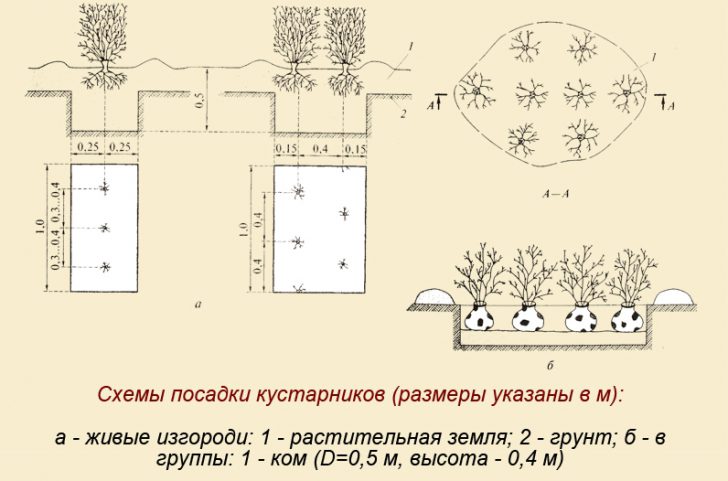
Shrub planting scheme
Based on these recommendations, it is better to transfer planting to the autumn period. This must be done before frost, it is desirable that the plant has time to take root. Most often, a plant transplant is performed in October. If it becomes necessary to do this later, but the frost has not yet come, you can do the work, but provide for additional insulation. To do this, near the trunk, sawdust or peat is added.

Mulching bushes along the fence with sawdust
During frosts, replanting trees and shrubs is not recommended.It is better to simply dig them in an inclined position, while covering the root with a layer of peat and earth, and landing in the spring.
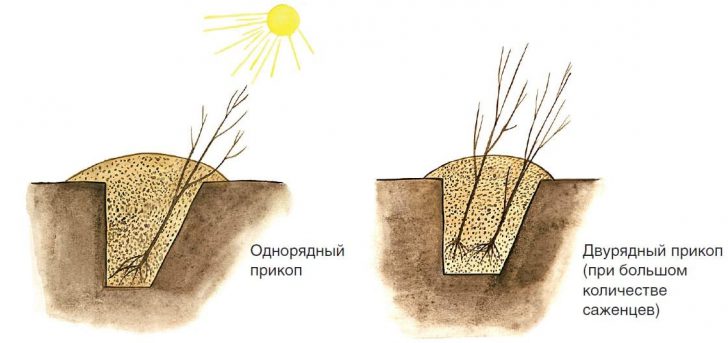
Digging seedlings for the winter
When choosing trees and shrubs for planting along the fence and paths, take into account the recommendations given in the article. They will help you properly organize the green space of a suburban area. Get aesthetic pleasure, relaxation and enjoyment of country life.
back to index ↑Photo gallery - trees and shrubs along the fence and paths
Video
